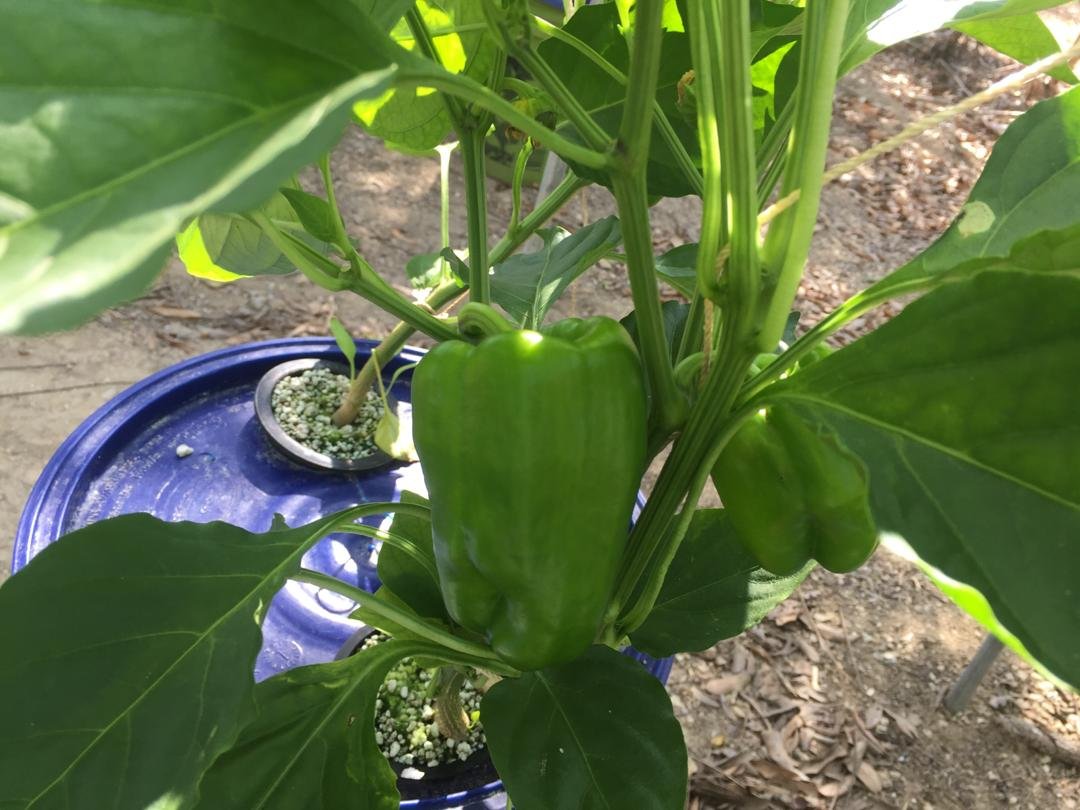Innovation Drives Continued Impact in Haiti
Author: Nate Heiden, Ph.D. R&D Director
“The newest peppers in the community with the new fertilizer mix are not producing peppers.”
“The newest peppers in the community with the new fertilizer mix are not producing peppers.” Girlo Augustin, Levo’s science lead in Haiti, informed me. “They grew large leaves and appear healthy, but they are not producing peppers.”
It is very difficult to source fertilizer in Haiti. We recently sourced a fertilizer blend to replace our usual mix which was no longer available in Pignon. In several trials it grew our model plant Amaranth well.
However, when Girlo tried it with peppers and tomatoes, fruit yields were low. This meant that Girlo and other Levo staff in Haiti would need to pause distribution and sales of hydroponic systems growing fruiting crops if they could not overcome this problem before they ran out of our original fertilizer.
Girlo turned his attention to diagnosing the problem with the nutrient solution. Girlo found evidence suggesting that the phosphorus levels were too low to enable fruiting. Therefore Girlo set out to search for fertilizer that could supplement the mixture with necessary phosphorus.
A few days later Girlo sent pictures of several different fertilizer labels that he had found. The label provides all of the relevant information about what nutrients are contained in a fertilizer. He and I talked about the possibilities, and we settled on one mix as the best potential solution.
The creation of a fertilizer recipe is complicated by the need to consider the interactions of different elements. Like people, plants require a balanced diet of nutrients. For example, if you add too much magnesium you may prevent the plant from taking up enough calcium even if there is plenty of calcium in the nutrient solution. So, we needed to consider not only the quantities of individual nutrients that we were adding, but also their relative concentrations compared to each other.
The recipe creation was further complicated because the fertilizer contained nitrogen in the form of ammonia rather than nitrate. Ammonia is taken up quickly by plants and used as a rapid nitrogen source, however it cannot be stored and toxicity can quickly occur if too much is provided. Even without toxicity, ammonia can increase leafy growth at the expense of fruit growth which is counter to our objectives for pepper plant growth. Therefore, Girlo and I needed to find a balance that would provide enough phosphorus without adding too much ammonia.
We settled on a rate of 1g/gallon of the new fertilizer which would add 30 parts per million (ppm) nitrogen from ammonia and 67 ppm phosphorus from phosphate. Girlo then conducted preliminary experiments comparing the yield of peppers with and without this added fertilizer. Girlo consistently found that pepper yields were increased with the added phosphorus. As a result, he was able to continue system delivery and maintenance for families in the area surrounding Pignon.
Girlo and Dunerose Bienamie, Levo’s community manager in Haiti, provided 16 new families with hydroponic systems in November 2024 using this updated fertilizer mixture.
Girlo and Dunerose have now provided 160 client families in the region with a total of 364 Bokit systems since 2021.
Girlo is working to create a self-sustaining hydroponic operation in Haiti that will not require U.S. supplies. His other projects include creating locally sourced fertilizers from agricultural waste products and finding alternative locally sourced hydroponic substrates. For example, he is working on producing coco coir from local coconuts to replace imported rockwool.
Levo is determined to empower motivated and skilled people like Girlo to improve food security in their communities. To support Girlo and his work please consider donating:







